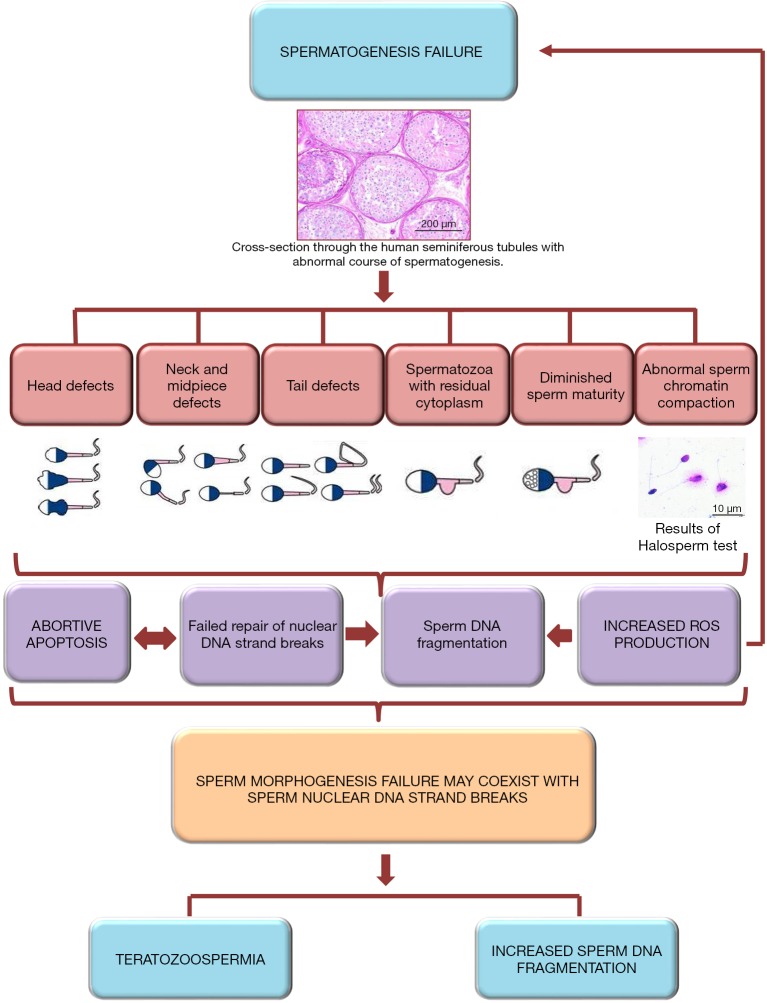Figure 1.
Hypothesized mechanism leading to the simultaneous creation of sperm morphological defects and sperm chromatin abnormalities. Abnormal spermatogenesis can result in (I) an increased number of sperm morphological defects, often leading to teratozoospermia; (II) diminished sperm maturity; (III) impaired sperm chromatin compaction; (IV) failed repair of nuclear DNA strand breaks appearing during the early spermatid stage; and (V) failure of germinal cells to undergo apoptosis, namely, ‘abortive’ apoptosis, meaning that germinal cells escape apoptosis and may display nuclear DNA fragmentation. Nonmature spermatozoa or sperm cells with diminished maturity (e.g., spermatozoon with residual cytoplasm) are known to have a higher number of resistant nuclear DNA strand breaks and to produce higher levels of reactive oxygen species, which can secondarily cause sperm DNA fragmentation and, finally, spermatogenesis failure (19-23).

